The content of the article
The main reason for the appearance of mold on the balcony is dampness. Moisture can seep through the cracks between the wall and the window frame, through a double-glazed window or a cracked paintwork. It is important to find and eliminate the source of dampness, and then get rid of the fungus in order to protect the apartment from unpleasant odors, and family members from allergies, decreased immunity and chronic bronchitis.
First aid for mold
All things are removed from the balcony, a layer of paint or old wallpaper is removed. Dismantle the skirting board and decorative trim. Furniture and other items covered with black coating are washed and disinfected, and only then brought into the house. Mold spores are volatile, and the fungus multiplies rapidly.
Work on the balcony only in a gauze bandage so that harmful microorganisms do not get into the lungs. Remove the carpets, take out all the garbage. Then carefully inspect the walls and find where the most mold is. If the fungus penetrates into the insulating materials, they are sawn off or torn off, otherwise the spores remaining in the deep layers of mineral wool or expanded polystyrene will again become active and will “capture” the balcony.
Plaster and black-coated concrete are scraped off. Use a wire brush with hard bristles or a narrow spatula, which is recommended to be sharpened slightly before use. Rub until the surface is clean, and then treat with antiseptic drugs.
Fungus
Among the store antifungal solutions, there are:
- Snow Puma;
- Teflex
- Anti B;
- Atlas Mykos;
- Anti mold
Drugs treat the inner and outer part of the wall, spray the product onto the ceiling and floor. Corners and crevices are abundantly watered next to the window frame. If there is not too much mold, one disinfection is enough to prevent plaque. Sometimes you have to repeat the procedure twice or thrice until the fungus disappears completely.
An alternative to store-bought preparations is vitriol. The substance is combined with chlorine or vinegar to enhance the antifungal effect.
Important: Work with copper sulfate carefully, be sure to wear rubber gloves if there are large scratches, ulcers or burns on your hands. The solution, getting on damaged skin, penetrates the bloodstream and causes intoxication of the body.
Vinegar Option
- In a ten-liter bucket, dilute 500 g of copper sulfate.
- Pour 80 ml of table vinegar.
- Heat the solution on the stove to 70 degrees.
- Wet the brush in hot water and apply liquid to the walls, capturing clean areas that are not affected by the fungus.
- Dry the walls with a hairdryer or turn on the heater on the balcony.
- The procedure with vitriol solution is repeated after 30 days, so repairs begin after 1.5–2 months after the first disinfection.
Chlorine Option
The fungus will destroy bleach, from which a ten percent solution is prepared:
- Pour 1 kg of powder into an old plastic or iron bucket.
- Add a little warm water to make a liquid slurry. Stir the mass thoroughly with a wooden spatula so that there are no lumps.
- Dilute the workpiece with water at room temperature to get 10 l of solution.
- Cover the chlorine tank with a lid and place on the balcony. Insist a day.
- Drain, discard sediment.
- Wet the brush in the solution and apply to the walls affected by the fungus, or pour it into the spray.
- Close the balcony tightly, leave for a day.
- Prepare a solution of 1 kg of copper sulfate and 10 l of hot water.
- Treat the new composition of the wall, leave to dry completely.
Pay special attention to corners and areas that were hidden under the baseboard.Lubricate the cracks and crevices with plenty of solution; be sure to disinfect the ceiling and floor.
Did the fungus appear in only a few places? Amazed by the small areas that were hidden behind the furniture or located next to the window? A solution of laundry soap will cope with mold:
- Grate the whole bar or cut into small pieces.
- Combine soap crumbs with 10 liters of warm water.
- Pound until the dry component dissolves and a thick foam forms.
- First scrape off the coating, and then apply soapy water to clean walls.
Repeat the procedure after the concrete has completely dried, so that the fungus no longer appears.
Instead of laundry soap, tea tree oil is used. It has antiseptic properties and a pleasant aroma. Dilute 15–20 ml of the product in 5 l of water, spray the walls with a spray bottle. Helps with small black spots. The solution is useless if the fungus has spread throughout the balcony and began to destroy concrete walls.
Air against mold
Black coating rarely appears in well-ventilated areas. Owners of glazed balconies are recommended to make several small holes in the frames and install a blower fan under the ceiling. You can not clutter up the space with old furniture and unnecessary things. Household debris impairs air circulation and does not let in sunlight, creating ideal conditions for the growth of mold.
Regular cleaning and airing is the best prevention of mold, so the windows and balconies open even in winter. It is advisable not to hang wet linen and towels on the balcony, to prevent condensation from accumulating on the ceiling and walls. At high humidity, use special devices to drain the air.
Repair work
Cracks and crevices between the frame and the concrete base are covered with cement mortar. The walls treated with an antifungal agent, after drying, are covered with antiseptic impregnation. Areas that have suffered from a fungus are warmed up before applying the composition.
The next step is waterproofing. Bituminous mastic or sprayed thermal insulation with water-repellent properties is suitable. The agent is applied in a thick layer to the walls, ceiling and floor. Use a paint brush or roller to evenly distribute the composition.
The finishing touch is the primer. Buy options with antiseptic properties to prevent mold from recurring. Treated walls and ceilings are faced with wallpaper or tiles.
Fungus attacks
After repairs, the corners of the balcony are dried, and then the walls and ceiling are treated with special impregnation. If the neighbor’s apartment is the source of the fungus from below or from the side, you will have to solve the problem together, otherwise the mold will come back, and even the primer and mastic will not help.
Prevention
No need to turn the loggia into a greenhouse. The balcony, lined with indoor flowers, looks good, but it is because of the plants that the air humidity rises and a black coating appears.
Are areas near the window frame covered in black? To clean the wall, wipe with Domestos or soap solution, repair the cracks and renew the putty. Primer, re-stick wallpaper.
Mold penetrates the concrete base and makes it loose and brittle. She is the cause of the unpleasant musty smell and health problems. Antiseptics will cope with a black coating. And so that the fungus does not appear again, the balcony is carefully insulated, not cluttered with furniture and aired daily.
Video: how to get rid of mold folk remedies

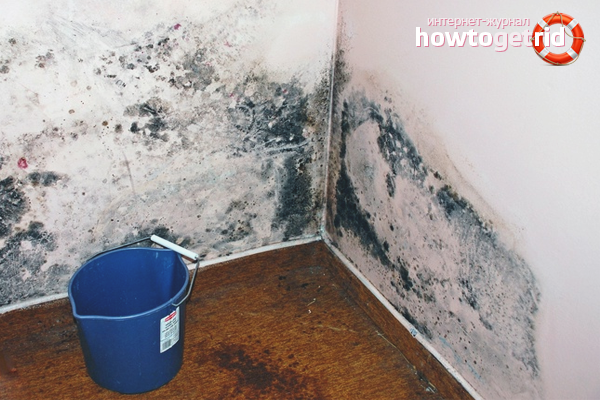
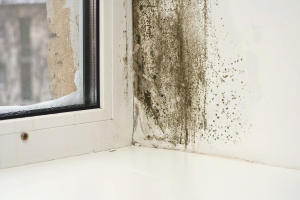
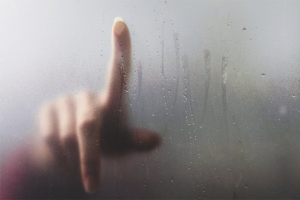

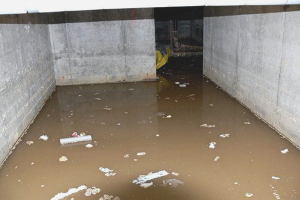
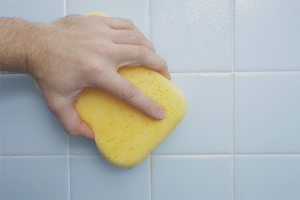
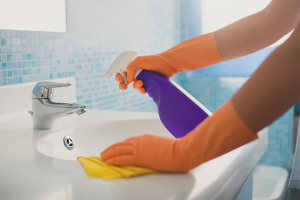

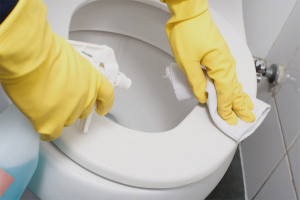
Submit